Possibly the most successful American naval procurement program of the post-Cold War era has been the Virginia class nuclear attack submarine. With 19 currently in service and another 15 either under construction or on order, it will soon eclipse the Los Angeles class as the backbone of the American submarine force. Even more impressive, current shipbuilding plans suggest that another 17 will be ordered before the basic design is replaced by the SSN(X) in the mid-2030s.
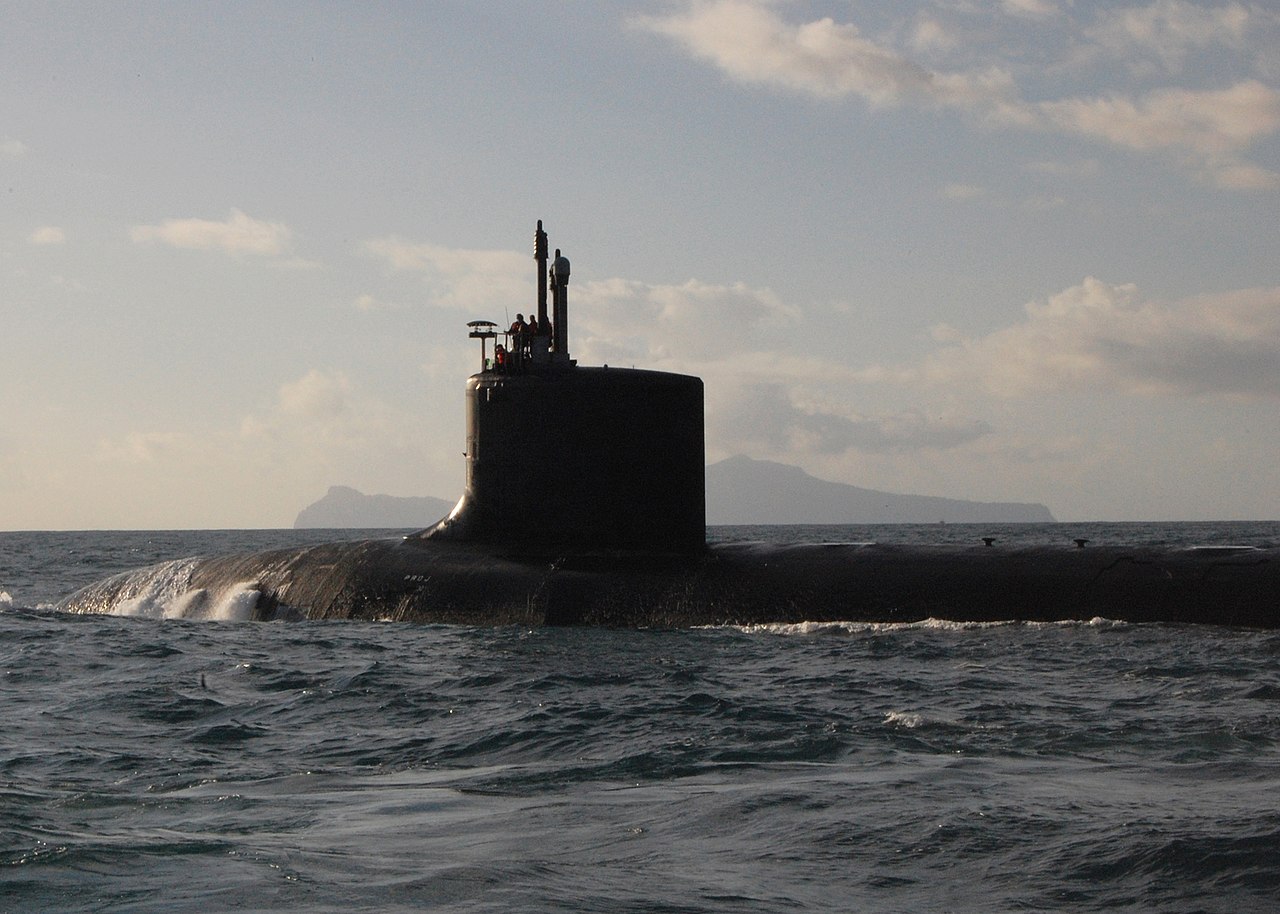
Virginia cruises on the surface
The USN's nuclear submarine force was built to fight the Cold War, facing down the massive fleet of nuclear submarines the Russians built for that conflict. When the Soviet Union collapsed, the USN was in the process of procuring the Seawolf class, designed as part of the Reagan Administration's Maritime Strategy, with the intention of drawing off the Soviet SSNs by threatening the bastions where they kept their missile submarines. This required a very capable submarine, which in turn meant that they were also very large and extremely expensive. This would obviously be unaffordable in the post-Cold War budgetary environment, and the program was ultimately terminated at three boats as the USN searched for an affordable successor.
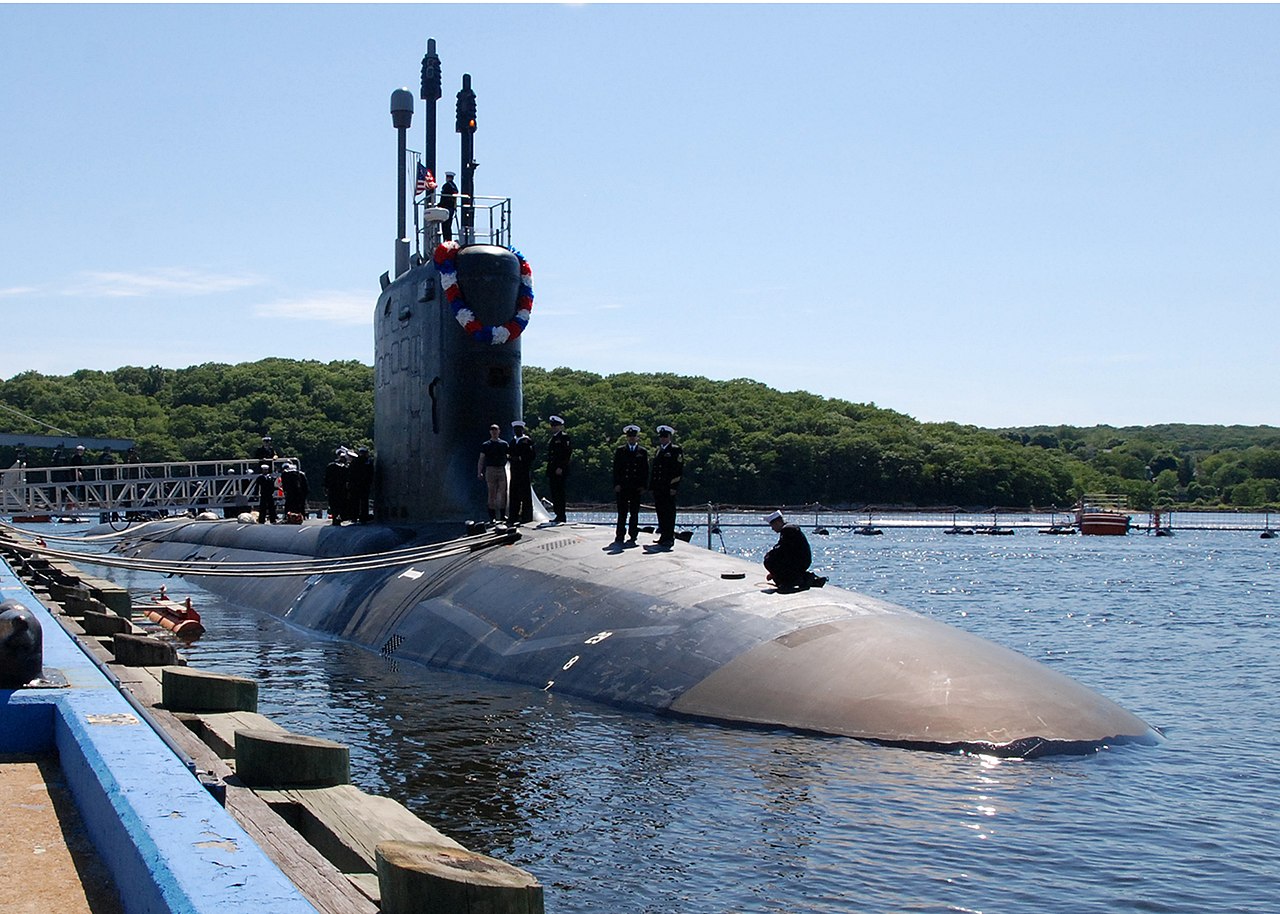
Missouri pierside shows off her two photonics masts
Much of the design of said successor, initially known as Centurion, was driven by a shift in missions. With the Russian submarine fleet largely rusting pierside, the new SSN would need to operate primarily in the littorals. This required changes in the sensor suite. Sonar's effectiveness was limited in shallow waters, as the beams could only be so narrow, placing a greater emphasis on the periscope. But a conventional periscope relies on the Captain to figure out the situation at a brief glance and report back before the periscope comes down again. This is a reasonable procedure for attacking a specific target detected by sonar, but works less well when trying to sort out dozens of possible targets on the fly. The solution came thanks to developments in electro-optics, which allowed the periscope to be replaced with a photonics mast, essentially a set of very nice digital cameras on a telescoping boom, which could record images for analysis at leisure by the crew of the submarine. This was larger than a normal periscope head, but most of it could be non-metallic (and thus stealthy) and it was exposed for far less time. The photonics mast also made designing the submarine rather easier. Instead of a large structure penetrating the pressure hull, only a small cable penetration is needed, and the control room can be placed anywhere instead of being restricted to just beneath the sail, which could be moved or reduced for better hydrodynamics. This let the designers of the new submarine move the control room down a deck, giving everyone more space to work, and integrating acoustic and non-acoustic data, with the net result being a Captain with a better picture of what was going on around the boat.
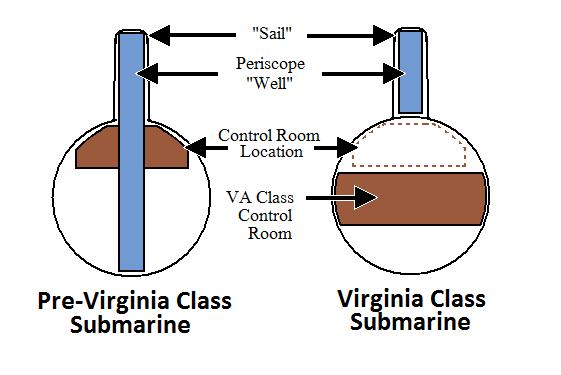
Nor was the photonics mast the only new technology used on the boat. Previous submarines had relied heavily on military-spec computers for their combat systems and sonar processing, which were both expensive and usually obsolete by the time they entered service. The Virginias broke from this, splitting their combat system so that the military-spec computers talked to the weapons, which required a rigorous certification process to make sure they didn't accidentally start shooting missiles. Everything else (tactical picture, sonar, etc) was run by Commercial Off-The-Shelf (COTS) computers. The system was designed to allow the COTS computers to be easily upgraded, taking advantage of the rapid growth in available computing power. This was particularly helpful for the sonar, which could use processing power to substitute for array size, matching the performance of the Seawolf suite at a much lower cost. To cut weight, the traditional electro-hydraulic ship controls were replaced by electric motors and fiber optic control lines. And the S9G reactor would last for the 30-year life of the submarine, removing the need for an expensive refueling overhaul. But in keeping with the program's focus on cost, virtually all of this (except the reactor) was tested at sea before it was installed on the Virginias, mostly on boats of the Los Angeles class.
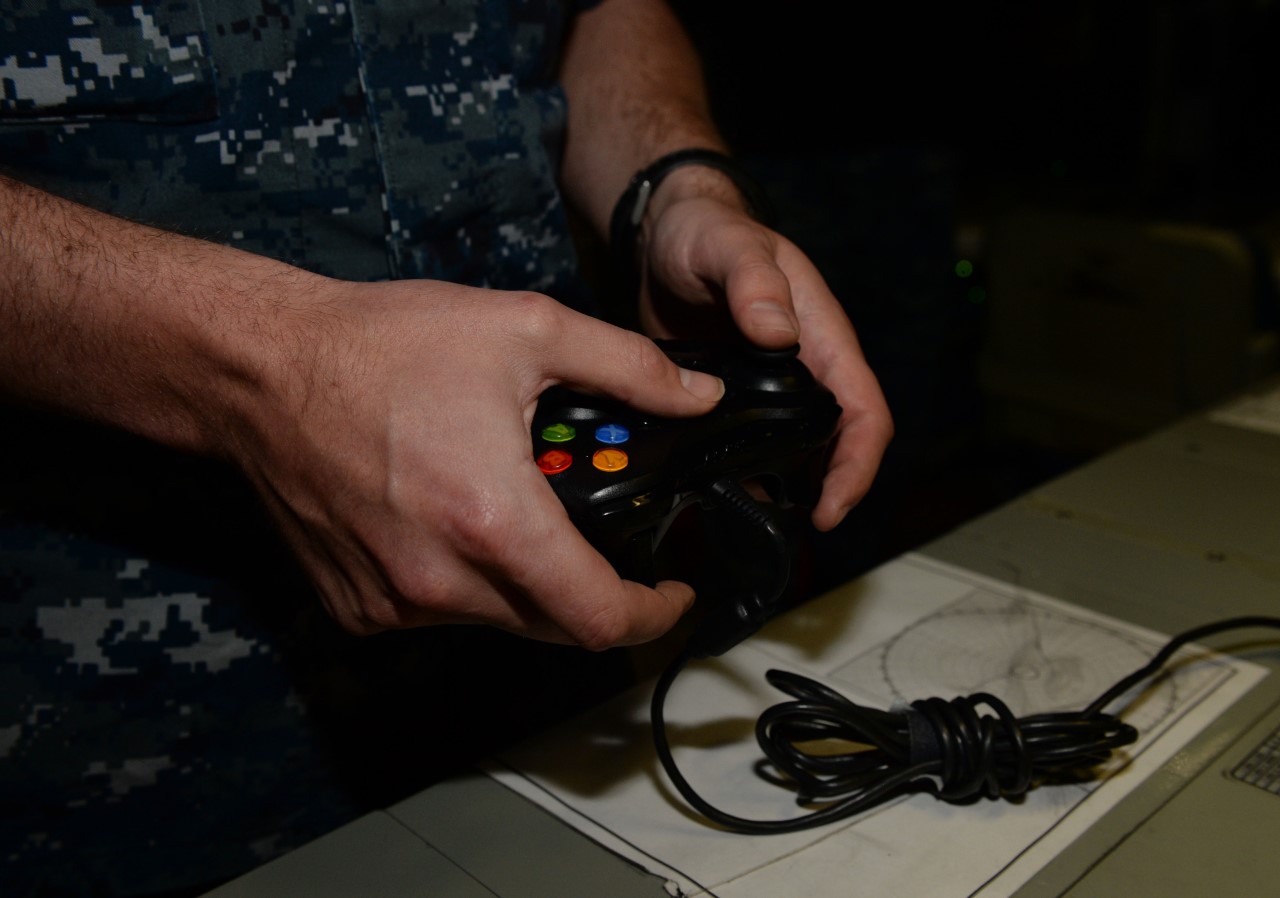
A sailor on Colorado uses an XBox controller to operate the photonics mast
The design statement for the new submarine listed seven key missions: covert (Tomahawk) strike, anti-submarine warfare, anti-ship warfare, battle group support, covert intelligence gathering, covert minelyaing and special operations. Quieting would have to meet Seawolf standards, while speed for battle group support would need to be about that of the Los Angeles, which unofficial reports suggest is around 33 kts.1 A number of studies were conducted, with displacements ranging from 5,000 tons (too slow and couldn't fit enough missiles) to 8,500 tons (anything bigger would be too close to Seawolf in size and thus not worth it). Eventually, they settled on something towards the larger end, at 7,800 tons submerged displacement. Electric Boat, in Groton, Connecticut, was designated the lead design yard, and proposed a new process where the various phases of design would be replaced by a single computer model that would be elaborated on as design progressed. Astonishingly, this worked quite well, and slashed the number of changes required late in the design process.
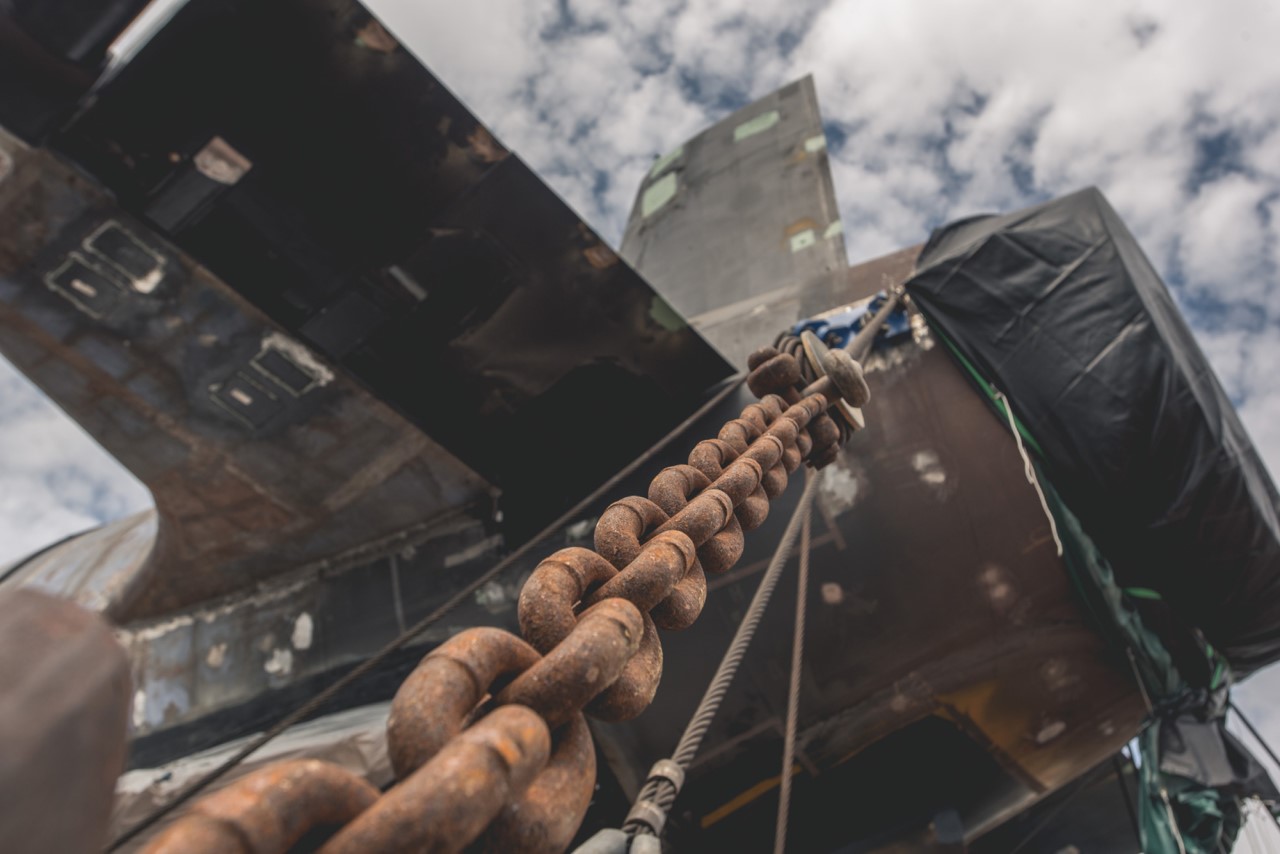
The stern section of Iowa is prepared for shipment from Newport News to Electric Boat
To ensure that the US wasn't reduced to a single yard capable of building nuclear submarines, the decision was made to split the build with Newport News in Virginia. The two yards entered into a teaming agreement where each would build specific sections of all of the boats, with the mostly-completed sections being shipped to whichever yard was performing final assembly. This was helped by the increasing percentage of work being done before the hull is welded up, 84% on the Virginia class as opposed to only 48% on the Ohios and 33% on the conventionally-built Los Angeles. Only the reactor compartment alternated between the two yards, although in theory, each yard could build the entire submarine if the other was unable to work for some reason.
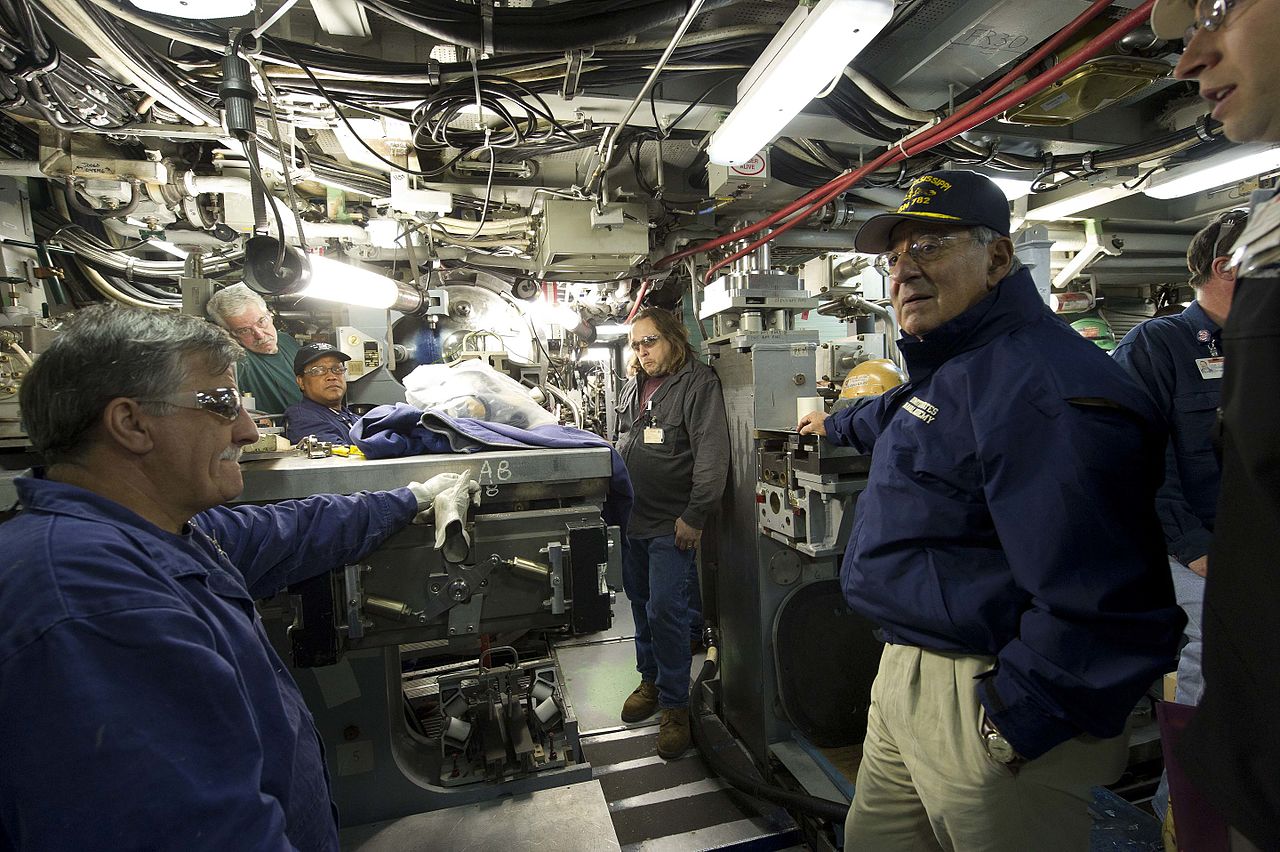
Secretary of Defense Panetta tours the torpedo room of Mississippi
The first four of the new boats were ordered in 1998 under a block contract designed to constrain costs, with Virginia herself being laid down a year later, launched in August 2003 and commissioned in October 2004, a surprisingly rapid construction cycle. She was armed with 4 torpedo tubes and a capacity of 22 weapons, a mix of Mk 48 torpedoes, mines and Tomahawks, in the torpedo room, along with 12 Tomahawks in vertical tubes. The torpedo room was also designed to make it easy to swap out weapon storage for unmanned vehicles or special forces. There's also a 9-man lockout chamber in case large numbers of swimmers need to be deployed, and fittings to allow installation of a Dry Deck Shelter for swimmer delivery vehicles. This mission is also supported by a chin sonar array for mine detection and covert oceanography, mapping the seabed in areas where conventional survey ships may not be welcome.
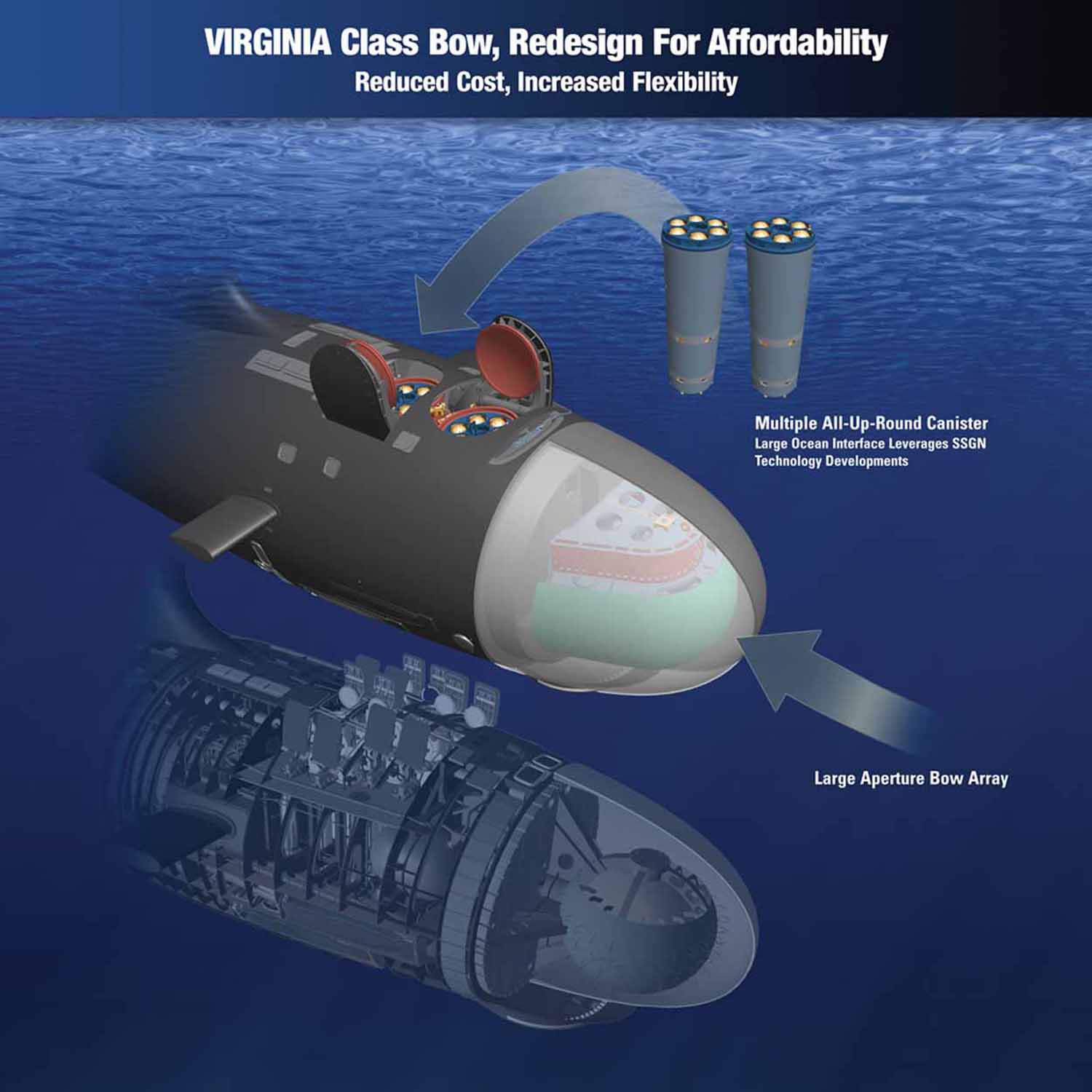
Production continued in blocks with six Block II boats procured in FY03-08, the only real change being that it was built in fewer sections before being assembled. Starting in 2005, the Navy began an aggressive push to make the next batch of boats cheaper, targeting a price of $2 billion each, which would allow them to order 2 a year, a number necessary to maintain the attack boat fleet at a reasonable level. This would involve taking $400 million out of a mature design, and while half of that could be saved thanks to the efficiencies from higher production rates and multi-year buys, it was still a big ask to take the other half out of a mature design for Block III. Despite this, the designers pulled it off, saving most of the money by making extensive changes to the bow. The spherical sonar array was replaced by a new distributed array which had better passive performance but worse active performance.2 The new array allowed the bow ballast tanks to be rearranged to fit a pair of new "Virginia Payload Tubes" (VPTs) in place of the 12-round VLS of the earlier boats. Initially, each VPT was set up to carry a 6-round Tomahawk canister, based on the ones used in the Ohio class SSGNs, but alternative loadouts, including unmanned vehicles and other missiles, have been proposed.

Oklahoma fires missiles from her VPM3
Eight Block III boats were ordered from FY09-FY13, and they were followed by 10 units of Block IV, which were modified to reduce the number of major overhauls required from four to three. This would cut costs and let each boat make one extra deployment during its career. The majority of this Block is under construction right now, with the first unit, Vermont, already in service. It is to be followed by Block V, the details of which are slightly unclear. The big change will be the arrival of the Virginia Payload Module, a system which will see the submarine extended with a plug containing four tubes that are very similar to the VPTs. This will give each 28 more Tomahawks, helping to fill the gap left when the Ohio class SSGNs retire in the next decade. Contrary to many sources, it appears that the first Block V, Oklahoma, will not have the VPM, but the second one, Arizona, will. It's not entirely clear how many other Block Vs will get the VPM, which also seems to have greater capability for SOF support and unmanned vehicles. A total of 10 Block Vs are currently planned, and are slated to be followed by Block VI and Block VII. Only very sketchy reports are available, but it appears that Block VI will focus on better stealth and "seabed warfare", the ability to place and remove things from the ocean floor.
Whatever the future holds for it, the Virginia class is a shining example of the military procurement system at its best. Increasingly the backbone of America's "silent service", it will continue to serve for decades to come.
1 Officially, the Navy lists the speed as 25+ kts for all three classes of SSN, although it's been an open secret for decades that the Los Angeles class tops out around 33 kts, with Seawolf somewhat faster. ⇑
2 Given that SSNs use passive sonar constantly and active sonar almost never, this was considered acceptable. ⇑
3 Image from General Dynamics, who are responsible for building her. We will hopefully find out if she actually has VPM sometime soon. ⇑

Comments
I'm surprised that the switch from periscope to cameras was so late.
OTOH I can just about remember when 'high definition tv' was a futuristic new thing so maybe I'm failing to appreciate just how much camera technology has improved in the last few decades.
The US was a little late in adoption. I think the French started taking them to sea in the 80s(?), and the RN fitted them to the Vanguards. And TV/film cameras for periscopes go back quite a ways, too.
I like success stories. Need more success stories :-)
For discussion: should nuclear attack submarines with vertical launch tubes, like the Virginia class, be labelled as SSGNs rather than as SSNs? Or perhaps just Block Vs with the extra tubes of the VPM? How about Flight II of the Los Angeles class?
Given how things work today, I'd lean towards only using the SSGN label for subs that are clearly not just normal attack submarines with some (or even some extra) vertical tubes. Otherwise, you risk adding to confusion rather than resolving it. I could see a moderately good case being made for the VPM subs, but not for the Block I-IV Virginias or the Flight II 688s.
the Block Vs do feel like they could warrant being called SSGLN, or something. But that's ugly and I hate it.